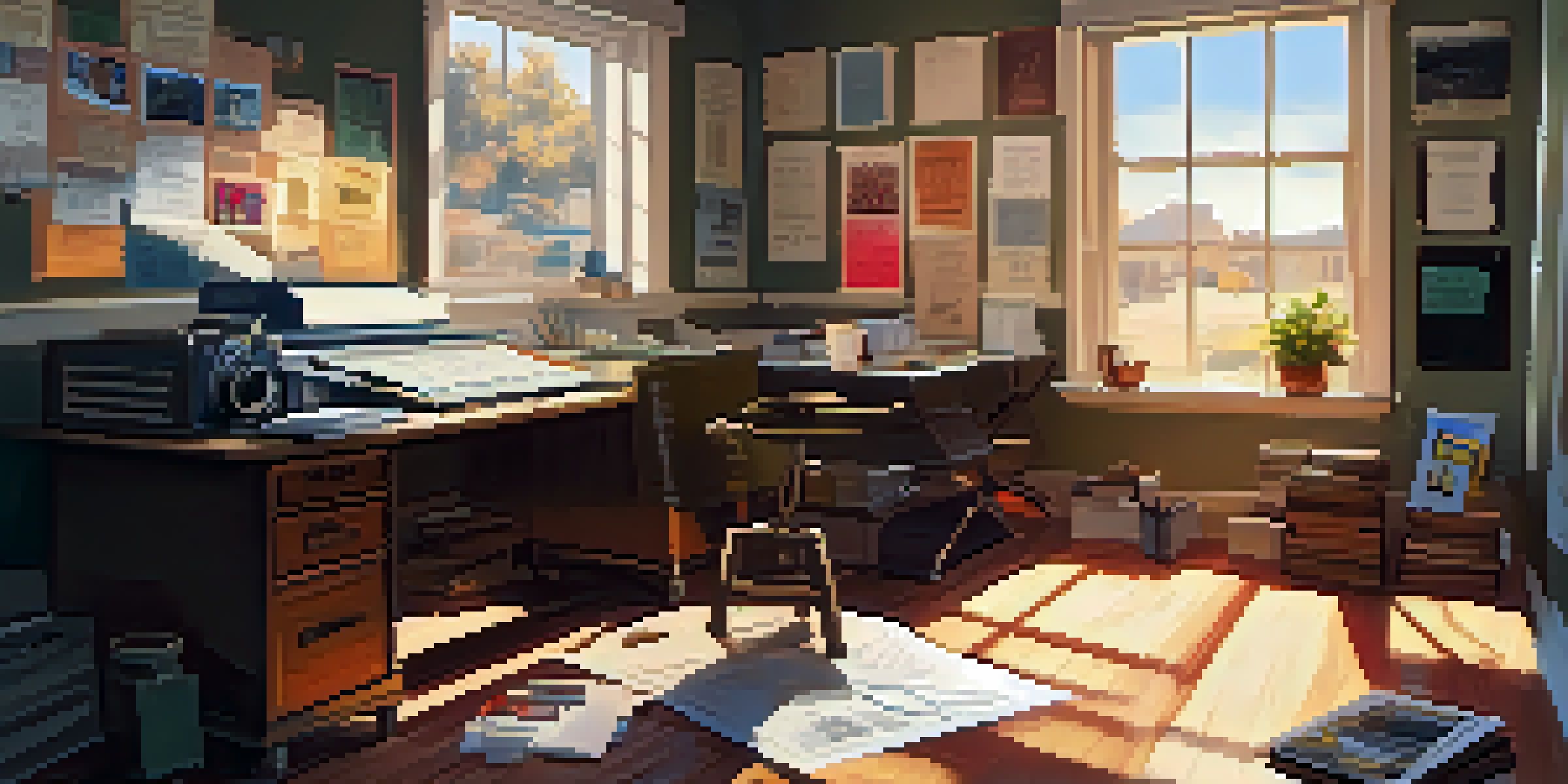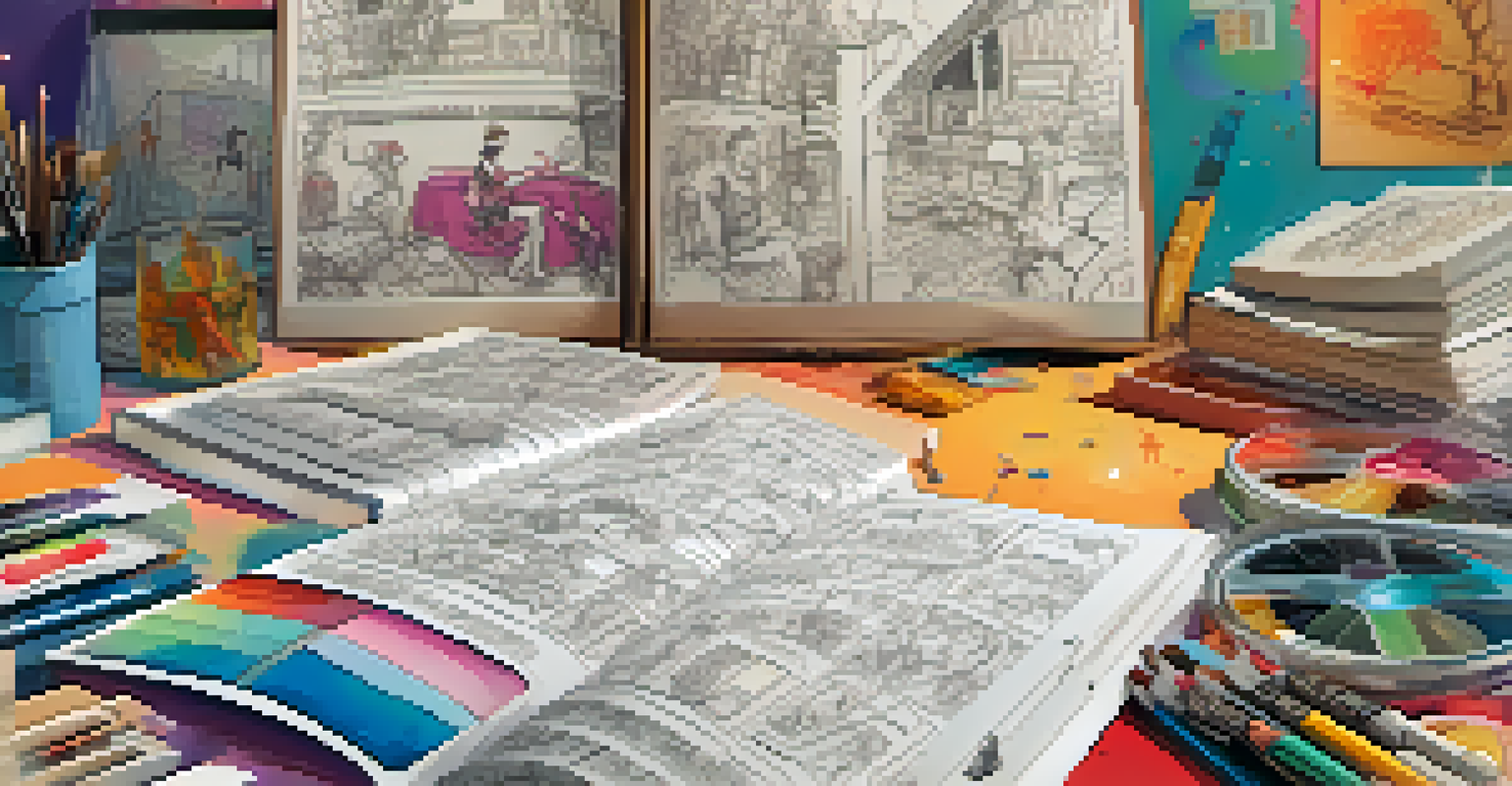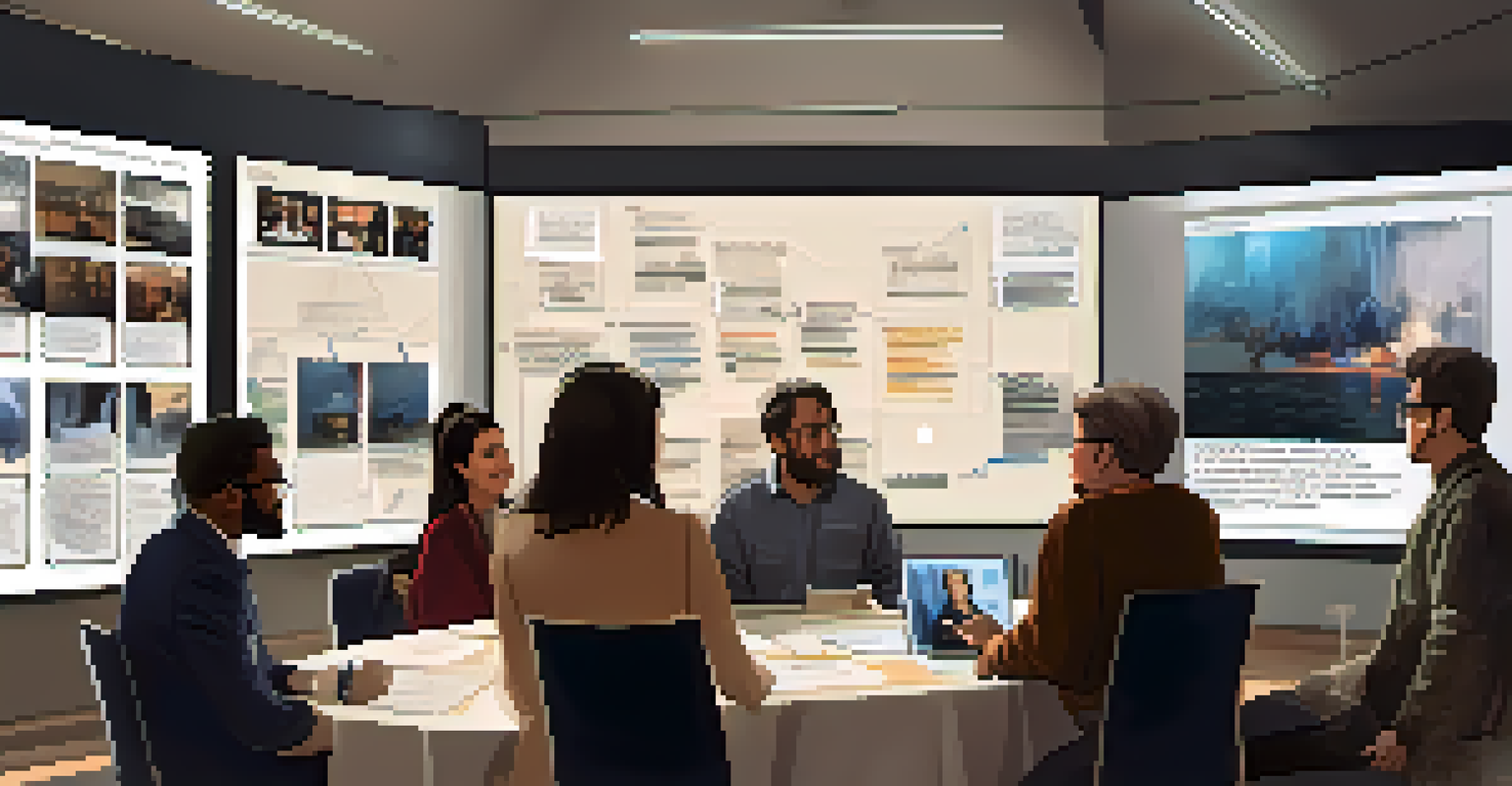The Impact of Storyboarding on Film Narrative and Structure

What is Storyboarding and Why is it Important?
Storyboarding is the process of visually plotting out a film's scenes using illustrations or images. It serves as a blueprint for filmmakers, allowing them to visualize the sequence of events before actual filming begins. By breaking down the narrative into manageable visuals, filmmakers can easily identify pacing, transitions, and key moments that will resonate with the audience.
Storyboarding is the visual thinking that turns a script into a movie.
This technique is crucial because it provides a clear roadmap for the story, ensuring that every detail aligns with the intended vision. It helps in making creative decisions, such as camera angles and character positioning, long before production starts. Furthermore, storyboarding creates a shared understanding among the cast and crew, fostering collaboration and reducing miscommunication during filming.
In essence, storyboarding is not just about drawing; it's about crafting the foundational elements of storytelling. Just like an architect sketches a building plan, filmmakers use storyboards to construct a compelling narrative that engages viewers from start to finish.
Enhancing Narrative Flow Through Visual Planning
One of the primary benefits of storyboarding is its ability to enhance narrative flow. By visually arranging scenes, filmmakers can easily identify how each segment transitions into the next. This visual layout helps to ensure that the story progresses logically and maintains the audience's interest throughout.

For instance, a filmmaker might notice during the storyboarding process that a particular scene feels disjointed or lacks emotional weight. By revisiting the sequence, they can adjust the order of events or add visual cues that enhance the storytelling. This iterative process is vital for creating a cohesive narrative that resonates emotionally with viewers.
Storyboarding Enhances Narrative Flow
By visually arranging scenes, filmmakers can ensure a coherent and engaging story progression.
Ultimately, storyboarding acts as a powerful tool for narrative refinement. It allows filmmakers to see the bigger picture and make necessary adjustments before the costly stage of filming, ensuring that the final product tells a seamless and engaging story.
Visualizing Character Development and Arcs
Storyboarding also plays a significant role in illustrating character development and arcs. By mapping out key scenes that highlight a character's growth, filmmakers can ensure that these transformations are visually represented throughout the film. This helps the audience to connect with the characters on a deeper level.
A storyboard is a way to visualize and organize your thoughts.
For example, if a character undergoes a significant change, such as from insecure to confident, storyboards can be used to depict this shift visually. A series of frames might show the character facing challenges, overcoming obstacles, and ultimately embracing their new self. This visual representation reinforces the narrative arc and makes the character's journey relatable.
In this way, storyboarding serves as a powerful narrative device, allowing filmmakers to emphasize emotional beats and character growth. It ensures that every visual choice aligns with the overarching story, creating a more immersive experience for the audience.
Identifying Themes and Motifs Through Storyboarding
Another impact of storyboarding is its ability to identify and reinforce themes and motifs within a film. As filmmakers lay out scenes, they can see how specific symbols or ideas are woven throughout the narrative. This visual process allows for a more cohesive thematic experience for the audience.
For instance, if a film explores the theme of isolation, storyboards can help highlight scenes that visually emphasize this feeling—perhaps through framing that showcases a character alone in a vast landscape. By doing so, filmmakers can ensure that the visual storytelling aligns with the thematic elements they wish to convey.
Visualize Character Growth Effectively
Storyboarding illustrates character arcs, allowing audiences to connect with their transformations.
Ultimately, storyboarding acts as a tool for thematic consistency, allowing filmmakers to reinforce their message visually. It helps create a rich narrative tapestry that resonates with viewers long after the credits roll.
Facilitating Collaboration Among the Creative Team
Storyboarding facilitates collaboration among the various members of the creative team, from directors and cinematographers to production designers and editors. By providing a visual reference, everyone involved can better understand the director's vision and how each scene contributes to the overall narrative. This shared understanding promotes more effective communication throughout the production process.
For example, when a storyboard is shared during pre-production meetings, the team can discuss specific shots, lighting, and set designs that align with the visual plan. This collaborative effort can lead to innovative ideas and solutions, enhancing the film's narrative quality. It also helps in identifying potential challenges in advance, allowing the team to address them before they escalate.
In this way, storyboarding becomes a crucial component of teamwork in filmmaking. It not only streamlines the creative process but also fosters a sense of unity as everyone works toward the same goal: telling a compelling story.
Improving Efficiency and Reducing Costs in Production
Another critical advantage of storyboarding is that it can significantly improve efficiency and reduce costs during production. By having a clear visual plan, filmmakers can streamline their shooting schedule, minimizing unnecessary takes and maximizing the use of time on set. This organization translates into cost savings, as fewer resources are wasted.
For instance, if a filmmaker has already mapped out the necessary shots through storyboards, they can efficiently coordinate the logistics of filming. This foresight helps in determining shot locations, scheduling actors, and managing equipment needs. It ensures that the production runs smoothly, which is particularly crucial when working within a tight budget.
Boosts Efficiency and Reduces Costs
A clear visual plan streamlines production, saving time and resources on set.
Thus, storyboarding not only enhances the artistic process but also serves as a practical tool for effective film production. It balances creative aspirations with the realities of budgeting and scheduling, leading to a more successful final product.
The Influence of Technology on Modern Storyboarding
Technology has significantly transformed the storyboarding process, making it more accessible and efficient. With the advent of digital tools and software, filmmakers can now create and edit storyboards with ease. This technological shift allows for greater flexibility and creativity in visual storytelling.
For example, filmmakers can now use software that enables the addition of annotations, camera angles, and even rough animations within their storyboards. This dynamic approach allows for a more interactive and collaborative experience among the creative team. It also makes it easier to share and revise ideas quickly, streamlining the overall process.

As technology continues to evolve, so too does the potential for storytelling through storyboarding. Filmmakers are now able to create intricate visual narratives that push the boundaries of traditional filmmaking, enhancing the impact of their narratives and structures.